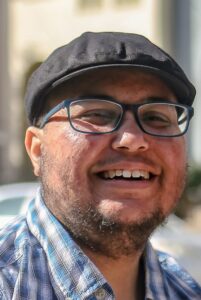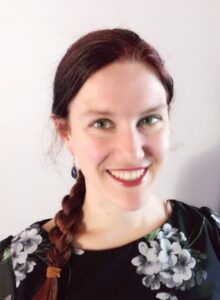by Debra Muzikar
“Take a fixation and broaden it out into something constructive.” Temple Grandin
Over the years, I’ve found it important to follow my son Kevin‘s lead. This often takes us places I’d never imagine. Following Kevin’s lead includes incorporating Kevin’s special interests (some may call them obsessions) into my own routines.
A hallmark of autism is obsessions or peseverations on sounds, sensations, movements, or subjects. Kevin for many years was fascinated with trains, as many children are.
After school, every day at 4:15 PM we’d take our positions at the train station in Carpinteria.
“Is it going to be a backward or forwards train?” he’d want to know.
If the caboose of the Amtrak was going down the track backwards he’d be especially happy. “Backwards train!” he yelled jumping up and down flapping his arms in delight.
His brio train set became his main source of therapy.
“Is the train going under or over the bridge?” the in-home therapist asked. She’d hold his hand stopping the train until he said the word. Kevin was highly motivated to participate in anything train-related…even therapy.
We had a library of train videos – Thomas the Train, real-life trains, and train documentaries. And lots of books on trains.
Rewards for good behavior were train trips. For $7 we’d take the train from Carpinteria to Santa Barbara. We’d plan the trip for days before embarking.
“What do you want to be when you grow up?” I asked Kevin when he was about 8 years old.
“A train engineer!” he said. Of course.
Later when he started painting, trains became one of his favorite subjects. He painted many train paintings. He also loved to paint train tracks without the train … and train stations … and different types of trains.

Kevin is now obsessed with music. Because of this we have him paint music-themed paintings.

When I compiled the second Art of Autism book I became aware of other parents who used their child’s obsessions in a creative manner.
Grant Manier in junior high developed an obsessive habit of tearing paper. He received some type of sensory pleasure from this activity. Instead of ignoring or discouraging Grant’s obsession, his mom, Julie, chose to work with it. She bought him some glue and channeled his paper-tearing into creating beautiful collages.

Grant has a website and sells his art in galleries. He now sells some of his art work, which includes thousands of pieces and often takes months to produce, for thousands of dollars. He’s made a career out of his obsession.
Wil Kerner is another artist who uses his passion to create extraordinary pieces of art.
Wil is mostly nonverbal. At age 10, for his birthday he received a pair of scissors. He wrapped his hands around the scissors and held them without placing his fingers in the holes. Yet he made perfect cuts. Cutting paper became his passion. He would cut paper all day long from morning until night. His grandmother, Susan, who raised him said her house became consumed with paper.

Then she noticed a strange thing. Wil arranged the pieces of cut paper into art forms. Sometimes they are images from his favorite video characters. Other times he does original creations. Cutting paper has become Wil’s primary therapy. It has helped him in his speech and with socialization. It’s given him the exposure to come out of his self-contained world.
Wil’s paper cut-out creations have been on display in art galleries on both the east and west coast. They sell for thousands of dollars.
James is influenced by the pop-art posters that hang in his home. His dad, an elementary school teacher, has an impressive collection of vinyl from the British Invasion. “The Beatles, The Rolling Stones, MOOG synthesized music,” his mom Wendy says. James has his own collection as well.
James takes his inspiration (music) and turns it into electronic art creating these types of brightly-colored original pieces.

Wendy enlarges them and finds venues for James’ art. James has synaesthesia and hears the colors.
Recently, I talked to Jodi Murphy of Geek Club Books. I was impressed that her son Jonathan is a voice over actor. His voice is heard at Great America Santa Clara on the rides and announcements.
Jonathan from a young age imitated voices and did recitations of videos. He felt compelled to do this getting up in the middle of the night pacing around the table imitating what he heard that day.
Now he does it for a living!

Jonathan has a puppet routine where he performs original adaptations of fairy tales. His practice of voices from when he was young serves him well.
You can find out more about Jonathan at Geek Club Books and on this blog.
These are a few examples of parents who have visioned a career for their Autistic child by actively participating in their child’s special interests.
Don’t be afraid to explore your child’s world. It can unfold in creative ways that you never imagined.









Thank you Debbie, and Kevin, for the great paintings. They seem alive with movement. I love The Strawberry Alarm Clock. They had one hit. Incense and Peppermints. It featured a clickty clackity, cow bell, like a train track. Fast and rhythmic.
Enjoyed this article, understanding and love guided them to be able to expresses their own beautiful abillities. Thank you
This is a great article Debbie!
Thanks for finally talking about >Your child’s passions can become an art form |
The Art of Autism <Liked it!